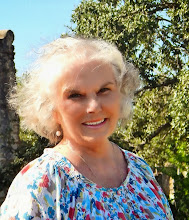 |
| Irena Sendler |
Born 2/15/1910-Died 5/12/2008 (age 98)
Sendler was born as Irena Krzyżanowska on 15 February 1910 in Warsaw Poland to Dr. Stanislaw Kryzanowski, a physician, and his wife, Janina. Her father died in February 1917 from typhus contracted while treating patients whom his colleagues refused to treat in fear of contracting the disease, among them many Jews. After his death, Jewish community leaders offered her mother help in paying for Sendler's education. Irena was raised Catholic and was not a Jew.
Sendler studied Polish literature at Warsaw University, and joined the Socialist party. She opposed the ghetto-bench system that existed at some prewar Polish universities and defaced her grade card. As a result of her public protest she was suspended from the University of Warsaw for three years. Under the ghetto-bench system, Jewish university students were forced, under threat of expulsion, to sit in a left-hand side section of the lecture halls reserved exclusively for them.
During WWII, Irena, got permission to work in the Warsaw ghetto as a nurse and social worker and also as a plumber/sewer specialist. She had joined a group called Zegoda, an underground resistance organization in German occupied Warsaw.
She had an ulterior motive for wanting to work in the ghetto.
Irena smuggled Jewish infants out in the bottom of the tool box she carried. She also carried a burlap sack in the back of her truck,
for larger kids.
Irena kept a dog in the back of the truck that she trained to bark when the Nazi soldiers let her in and out of the ghetto.
The soldiers, of course, wanted nothing to do with the dog and the barking covered the kids/infants noises. During her time of doing this, she managed to smuggle out and save 2500 kids/infants.
In 1943, Sendler was arrested by the Gestapo, severely tortured, and sentenced to death. Both her legs and arms were broken. Żegota members saved her by bribing German guards on the way to her execution. She was listed on public bulletin boards as among those executed. For the remainder of the war, she lived in hiding, but continued her work for the Jewish children.
After the war, she and her co-workers gathered together all of their records with the names and locations of the hidden Jewish children and gave them to their Żegota colleague Adolf Berman and his staff at the Central Committee of Polish Jews. However, almost all of their parents had been killed at the Treblinka extermination camp or gone missing
In 1965, Sendler was recognized by Yad Vashem as one of the Polish Righteous among the Nations.. A tree was planted in her honor at the entrance to the Avenue of the Righteous at Yad Vashem.
Sendler was posthumously granted the Audrey Hepburn Humanitarian Award. The award, named in honor of the late actress and UNICEF ambassador, is presented to persons and organizations recognized for helping children. She was also awarded the Commander's Cross by the Israeli Institute. On 14 March 2007, Sendler was honoured by the Polish Senate. Aged 97, she was unable to leave her nursing home to receive the honour, but she sent a statement through Elżbieta Ficowska, whom Sendler had helped to save as an infant.
Polish President Lech Kaczynski stated she "can justly be nominated for the Nobel Peace Prize.”
In 2007 Irena Sendler was a candidate for the Nobel Peace Prize but it was won that year by Al Gore for his video on global warming.
"Every child saved with my help is the justification of my existence on this Earth, and not a title to glory."
(Irena Sendler)











